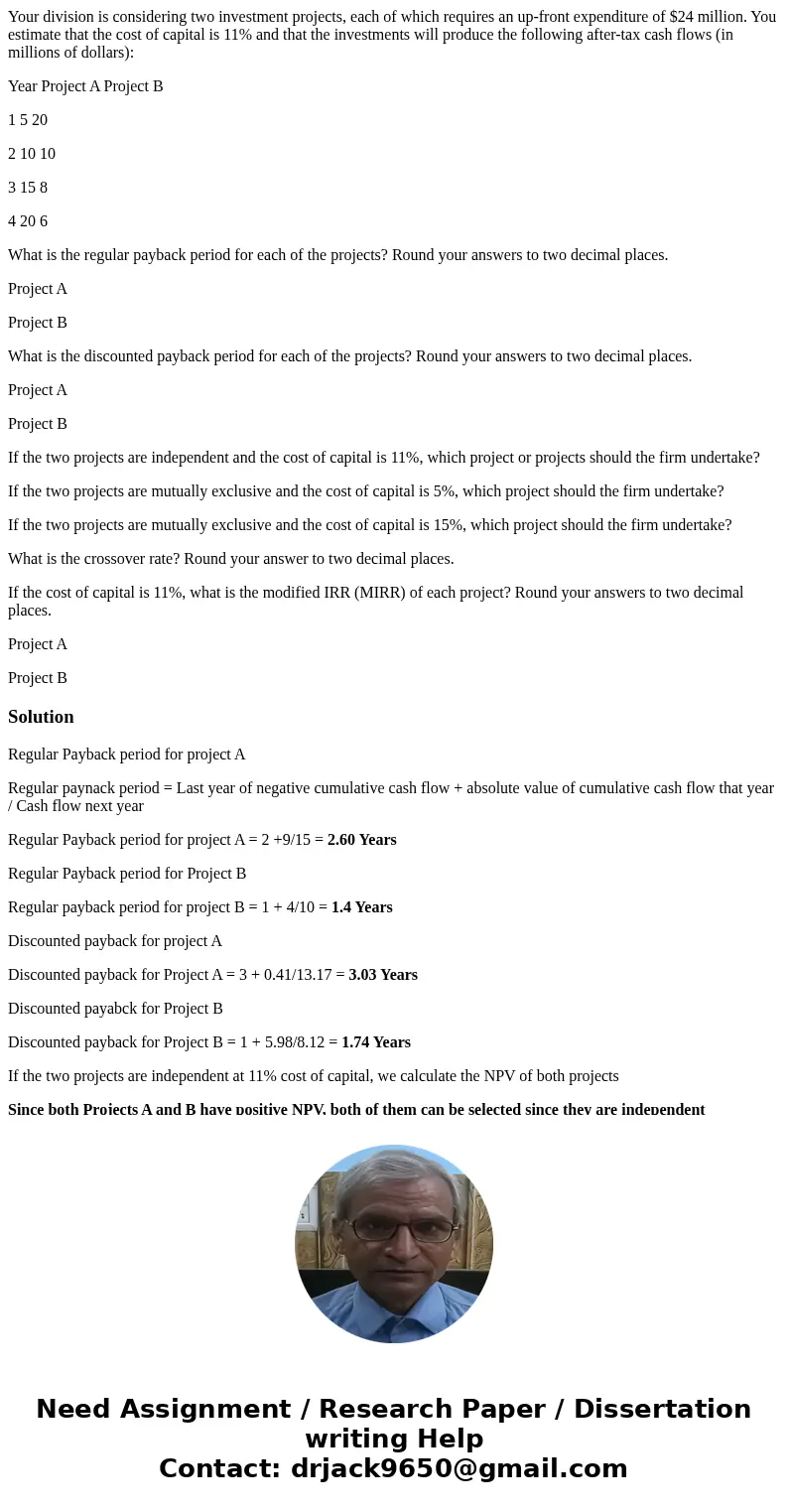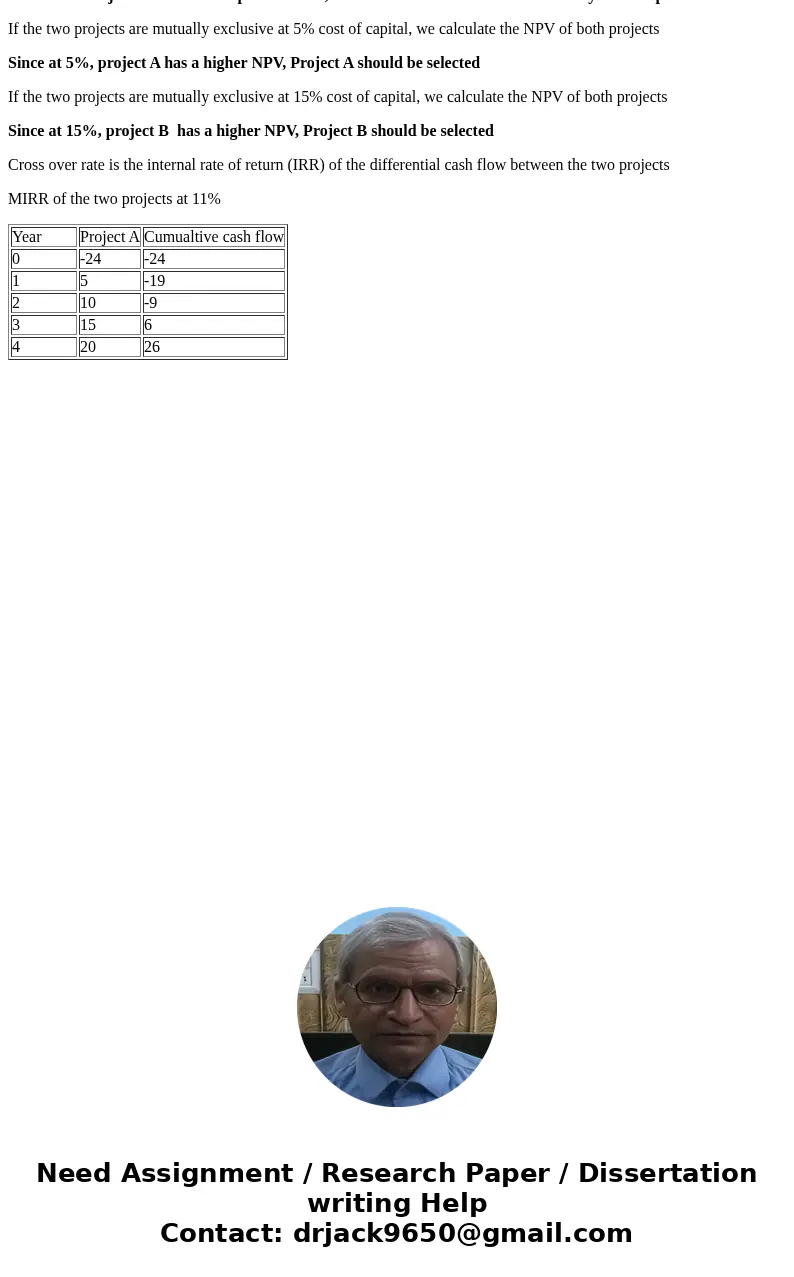Your division is considering two investment projects each of
Your division is considering two investment projects, each of which requires an up-front expenditure of $24 million. You estimate that the cost of capital is 11% and that the investments will produce the following after-tax cash flows (in millions of dollars):
Year Project A Project B
1 5 20
2 10 10
3 15 8
4 20 6
What is the regular payback period for each of the projects? Round your answers to two decimal places.
Project A
Project B
What is the discounted payback period for each of the projects? Round your answers to two decimal places.
Project A
Project B
If the two projects are independent and the cost of capital is 11%, which project or projects should the firm undertake?
If the two projects are mutually exclusive and the cost of capital is 5%, which project should the firm undertake?
If the two projects are mutually exclusive and the cost of capital is 15%, which project should the firm undertake?
What is the crossover rate? Round your answer to two decimal places.
If the cost of capital is 11%, what is the modified IRR (MIRR) of each project? Round your answers to two decimal places.
Project A
Project B
Solution
Regular Payback period for project A
Regular paynack period = Last year of negative cumulative cash flow + absolute value of cumulative cash flow that year / Cash flow next year
Regular Payback period for project A = 2 +9/15 = 2.60 Years
Regular Payback period for Project B
Regular payback period for project B = 1 + 4/10 = 1.4 Years
Discounted payback for project A
Discounted payback for Project A = 3 + 0.41/13.17 = 3.03 Years
Discounted payabck for Project B
Discounted payback for Project B = 1 + 5.98/8.12 = 1.74 Years
If the two projects are independent at 11% cost of capital, we calculate the NPV of both projects
Since both Projects A and B have positive NPV, both of them can be selected since they are independent
If the two projects are mutually exclusive at 5% cost of capital, we calculate the NPV of both projects
Since at 5%, project A has a higher NPV, Project A should be selected
If the two projects are mutually exclusive at 15% cost of capital, we calculate the NPV of both projects
Since at 15%, project B has a higher NPV, Project B should be selected
Cross over rate is the internal rate of return (IRR) of the differential cash flow between the two projects
MIRR of the two projects at 11%
| Year | Project A | Cumualtive cash flow |
| 0 | -24 | -24 |
| 1 | 5 | -19 |
| 2 | 10 | -9 |
| 3 | 15 | 6 |
| 4 | 20 | 26 |


 Homework Sourse
Homework Sourse